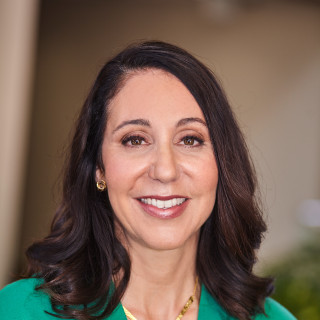 In the United States, the FDA recently held a Public Advisory Committee Meeting to re-assess all currently approved breast implants in the United States. Why all the concern? Breast implants have received a lot of press in the last several months and certain implants have been pulled off the market in France and Canada. The primary motivator was the ongoing evidence of an association between Breast Implant Associated Anaplastic Lymphocytic Lymphoma (BIA-ALCL) and textured implants. There is also a contingent of patients raising awareness of Breast Implant Illness, a constellation of symptoms these women strongly believe are caused by their breast implants.
In the United States, the FDA recently held a Public Advisory Committee Meeting to re-assess all currently approved breast implants in the United States. Why all the concern? Breast implants have received a lot of press in the last several months and certain implants have been pulled off the market in France and Canada. The primary motivator was the ongoing evidence of an association between Breast Implant Associated Anaplastic Lymphocytic Lymphoma (BIA-ALCL) and textured implants. There is also a contingent of patients raising awareness of Breast Implant Illness, a constellation of symptoms these women strongly believe are caused by their breast implants.
Although, as a plastic surgeon, I have seen many patients who are considering implant removal, most women first seek an evaluation by a primary care physician. Here are five things to know when evaluating a patient with breast implants who is considering removal.
Remind Me How Many Kinds of Implants There Are?
Breast implants come in many different combinations of fill, size, shape, profile, and texture. All implants have a silicone - based shell but are filled with either saline or silicone gel. Textured implants are being highlighted because of the risk of Breast Implant Associated Anaplastic Large Cell Lymphoma (BIA-ALCL). In the United States most implants placed are smooth – this means the shell of the implant is just that – smooth. Textured implants have a rough surface that helps them stick to the surrounding tissue. They can be either silicone or saline, round or anatomic (shaped) implants. Textured implants are FDA-approved in the U.S. but are more commonly used globally. There are also some types of textured implants and polyurethane coated implants that are not available in the US. Plastic surgeons use the same implants for cosmetic and reconstruction patients.
Why Do Women Want Implants Removed?
Some patients decide over time that the size of the implants they have are too large or heavy. With time, health, or weight changes women may feel that their breast implants may no longer fit their lifestyle. Women who have had recurrent capsular contracture (thickened scar around the implant) may elect to remove their implants instead of continuing with more surgery. If rupture of the implant is detected, then the implant should be removed. Some women have associated their implants with health issues – they have self-identified as having Breast Implant Illness. Most of these patients have sought out a primary care physician to help address their complaints of fatigue, memory loss, muscle aches and a variety of other symptoms that do not correlate to a medical diagnosis or lab abnormality. These patients seek to have their implants removed with the goal of relieving their symptoms.
Back Up — What Do We Know About Bia-Anaplastic Large Cell Lymphoma?
The ALCL associated with breast implants is a rare and slow developing disease and largely curable. It is unknown what specifically causes BIA-ALCL but the association between textured implants and possible low level of chronic bacterial inflammation has been made. There is a theory that there may be a genetic pre-disposition but we do not have a marker to test for at this time. There have been no known cases of BIA-ALCL in women who have only had smooth implants.
BIA-ALCL often presents as a fluid collection around a breast implant that accumulates suddenly over days to weeks. It is diagnosed when that fluid is sent for cytology and positive for certain markers. If the cytology confirms the diagnosis then the implant, the fluid, and the capsule should be removed. When diagnosed early, this is a curative treatment. There have been nine reported deaths in the U.S. – a delay in diagnosis can lead to the progression of the disease.
The Patient in My Office Has Textured-Surfaced Implants, Now What?
The important thing is to stay informed as the data collected is ongoing and being reviewed the major plastic surgery societies and the FDA. If the patient has a fluid collection or lump around their breast implant, then it is important to have it evaluated by a physician or multi-disciplinary team who are versed in assessing for BIA-ALCL. This will include aspiration of the fluid collection and sending it for a diagnostic evaluation that includes cytological evaluation of seroma fluid with Wright Giemsa stained smears and cell block immunohistochemistry / flow cytometry testing for cluster of differentiation (CD30) and Anaplastic Lymphoma Kinase (ALK) markers.
It is not currently recommended that patients have textured implants removed unless they demonstrate symptoms of a fluid collection or a mass. Some women are electing to change their implants for smooth implants if they are undergoing breast surgery for a different reason.
What Should Female Patients Know Before Getting Their Breast Implants Removed?
Appreciate that there is not a one size fits all plan – every medical treatment has risks and benefits. It is critical that we respect that women will have different opinions about breast implants and should be afforded the opportunity to make decisions regarding surgery that are informed. Patients should carefully consider the reasons and motivation for implant removal. Many insurance companies will not cover elective implant removal unless specific criteria are met, so it is important to factor in the cost of the surgery as well as the time for recovery. Women must understand that their breast tissue will have changed over time and that removal may result in flattened or sagging tissue. Some women might elect to have a breast lift or fat grafting at the time of implant removal. There are multiple options and it is important to discuss their goals and expectations with a board-certified plastic surgeon.
Dr. Katerina Gallus is a board-certified plastic surgeon with breast implants practicing in San Diego. She stays busy as a co-owner of Restore SD Plastic Surgery and keeping up with her three daughters and their new lab rescue puppy.
Image by Kit8.net / Shutterstock







